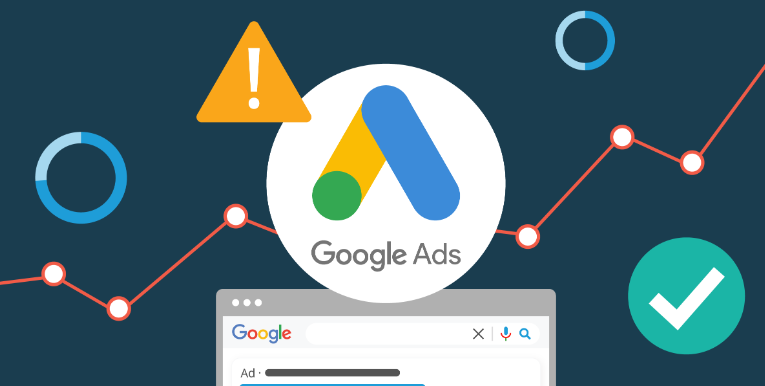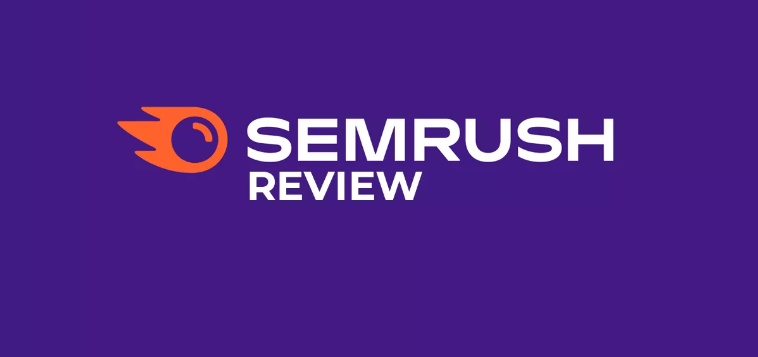5 Must-Have Tools for Analyzing Competitors on Google Ads
 Hemant SEO
Hemant SEOIn the fast-paced world of digital marketing, staying ahead of the competition is crucial, especially when it comes to running paid advertising campaigns. Google Ads is one of the most powerful platforms for driving traffic and sales, but it’s also a highly competitive space.
To get the best results, you not only need to optimize your own campaigns but also closely monitor your competitors.

Analyzing what your competitors are doing can give you key insights into their strategies, strengths, and weaknesses.
With this knowledge, you can refine your own Google Ads campaigns, spot new opportunities, and avoid costly mistakes. The right tools can make this process a lot easier and more effective.
In this guide, we will explore 5 must-have tools for analyzing your competitors on Google Ads. These tools will help you gain insights into competitor keywords, ad copy, spend estimates, and much more.
1. SEMrush
SEMrush is one of the most popular tools in the digital marketing industry. It’s well-known for its extensive suite of features that help businesses analyze their competitors’ paid search (Google Ads) campaigns.

Key Features of SEMrush for Google Ads Competitor Analysis
Ad Copy Analysis
One of the most important things you can learn from SEMrush is the actual ad copy your competitors are using. SEMrush allows you to see not only the text of the ads but also the ad extensions and any call-to-action phrases your competitors are using. This can give you valuable insights into the messaging that works well in your industry and help you craft better ad copy for your own campaigns.
Competitor Keyword Gap Analysis
Using SEMrush’s Keyword Gap feature, you can identify keywords that your competitors are bidding on but you are not. By analyzing this gap, you can discover keyword opportunities that you may have missed, helping you expand your targeting and drive more relevant traffic to your site. This can also help you refine your existing keyword list by adding high-performing keywords from your competitors.
Traffic Analytics
Another powerful feature of SEMrush is its Traffic Analytics tool, which lets you analyze where your competitors’ traffic is coming from. Whether it’s paid search, organic search, or direct traffic, you can get a detailed breakdown of their overall traffic sources. This helps you understand the bigger picture of your competitor’s marketing strategy and find potential areas for improvement in your own campaigns.
Why SEMrush is a Must-Have
SEMrush is an all-in-one tool that not only helps you analyze competitor ads but also provides detailed insights into keywords, traffic, and overall digital strategy. Whether you’re a small business or a large enterprise, SEMrush gives you a deep dive into your competitors’ Google Ads performance, making it one of the most essential tools in any marketer’s toolkit.
2. SpyFu
SpyFu is another powerful tool for competitive research, especially when it comes to Google Ads. While it’s often compared to SEMrush, SpyFu offers its own set of unique features that make it an excellent choice for competitor analysis.
Key Features of SpyFu for Google Ads Competitor Analysis
Keyword & Ad History
SpyFu allows you to see the full history of your competitors’ Google Ads campaigns. You can explore which keywords they have been bidding on for months or even years. This is useful for spotting trends, understanding seasonal fluctuations, and identifying long-term strategies that have worked for them.
Ad Variations
One of SpyFu’s standout features is its ability to show you multiple variations of your competitors' ads. You can analyze how competitors tweak their ad copy and what types of calls-to-action (CTAs) they use. This can help you spot winning ad strategies, ad copy formulas, and creative trends that you can replicate or improve upon for your own campaigns.
Backlink & Organic Search Data
SpyFu doesn’t just focus on paid search; it also includes valuable organic search insights. By understanding your competitors' organic rankings and backlink strategies, you can get a complete picture of their digital marketing strategy. This holistic view helps you identify areas where you can improve both your paid and organic efforts.
Why SpyFu is a Must-Have
What sets SpyFu apart is its extensive historical data. By seeing which keywords and ads have been successful for your competitors over the long term, you can make more informed decisions about which strategies to adopt. It’s particularly valuable if you want to track competitors’ evolution in paid search over time.
3. Google Keyword Planner
Google Keyword Planner is a free tool provided by Google, and while it’s primarily designed for keyword research, it can also be an extremely valuable resource for competitor analysis. This tool gives you direct insights into the keywords and search volumes that your competitors are targeting in Google Ads.
Key Features of Google Keyword Planner for Competitor Analysis
Keyword Suggestions & Search Volume
The Keyword Planner lets you enter specific keywords or domains, and it will show you a list of keyword ideas along with search volume data. If you enter your competitor’s website or a specific keyword they might be targeting, you can get insights into the volume of searches for that keyword and see how competitive it is.
Competitive Metrics
When you use Google Keyword Planner, it also provides data on how competitive each keyword is. This includes the average bid range and competition level for specific keywords. Knowing this helps you understand which keywords are likely to be more expensive and which ones might be easier to target in your Google Ads campaigns.
Market Trends
The tool allows you to see how the search volume for keywords has changed over time. This can help you stay on top of emerging trends in your industry, and also give you an idea of when your competitors might be scaling up their paid campaigns.
Why Google Keyword Planner is a Must-Have
As a free tool provided by Google, Keyword Planner is an excellent place to start your competitor research, especially if you're working with a tight budget. It gives you reliable data straight from the source, helping you find keywords that your competitors are targeting and tailor your own bidding strategies accordingly.
4. Ahrefs
While Ahrefs is mostly known for its SEO capabilities, it also provides valuable insights for Google Ads competitor analysis. If you’re looking for a tool that combines both paid and organic research, Ahrefs is a great choice.

Key Features of Ahrefs for Competitor Analysis
Paid Search Insights
Ahrefs offers a detailed overview of the keywords your competitors are bidding on in Google Ads. You can see which paid search keywords are bringing in traffic for your competitors, as well as their estimated ad spend and ad copy strategies. This makes it a powerful tool for identifying profitable keywords that you can target in your own campaigns.
Top Pages and Ads
Ahrefs also shows you the top-performing landing pages and ads for your competitors. By analyzing these pages, you can gain insights into their overall ad strategy, including which products or services they are promoting the most and how they structure their landing pages to convert visitors.
Ad Spend Estimates
One of the more unique features of Ahrefs is its ability to estimate a competitor’s ad spend. By tracking the performance of your competitors’ ads over time, Ahrefs can give you an idea of how much they are spending on Google Ads. This can help you gauge the level of competition in your market and adjust your own budget accordingly.
Why Ahrefs is a Must-Have
Ahrefs is a fantastic tool for those who want a complete picture of their competitors' digital marketing efforts. With its combination of paid and organic insights, it’s perfect for businesses that want to take a comprehensive approach to competitor analysis and understand both paid search and SEO strategies.
5. Adbeat
Adbeat is a competitor research tool specifically designed to help you analyze display and paid search ads. While it focuses more on display advertising, it can still offer valuable insights into Google Ads and other paid strategies.
Key Features of Adbeat for Competitor Analysis
Ad Placement Insights
Adbeat lets you see where your competitors are placing their Google Ads. Whether they are targeting specific websites, apps, or using specific ad placements on the Google Display Network, you can track where their ads are showing up. This gives you insights into their targeting strategy and can help you fine-tune your own placement targeting.
Ad Creative Analysis
Adbeat offers an in-depth look at the actual ads your competitors are using. You can see the exact ad creatives (both text and images), ad copy, and even the landing pages that are being used in their campaigns. By analyzing these, you can uncover trends in messaging, design, and offer that are resonating with their target audience.
Budget & Spend Trends
Adbeat also tracks changes in ad spend over time, giving you insights into when competitors are increasing or decreasing their ad budgets. This helps you understand when competitors might be scaling up their campaigns and gives you a sense of their advertising strategy over time.
Why Adbeat is a Must-Have
Adbeat’s focus on ad creatives and placements makes it unique. If you want to get a deep understanding of your competitors' ad strategies, including their display ads, this is a great tool to use. It’s especially helpful for spotting patterns and trends in your competitors' ad strategies.
Conclusion
Competitor analysis is an essential part of any successful Google Ads campaign. By understanding what your competitors are doing, you can spot opportunities, identify weaknesses, and optimize your own campaigns for better performance.
The tools we’ve discussed in this guide—SEMrush, SpyFu, Google Keyword Planner, Ahrefs, and Adbeat—are all incredibly powerful in their own right, offering a variety of features to help you track competitor keywords, ad strategies, spend patterns, and more.
By leveraging these tools, you can gain the insights needed to refine your own Google Ads campaigns, drive more relevant traffic, and stay ahead of the competition.
Subscribe to my newsletter
Read articles from Hemant SEO directly inside your inbox. Subscribe to the newsletter, and don't miss out.
Written by
